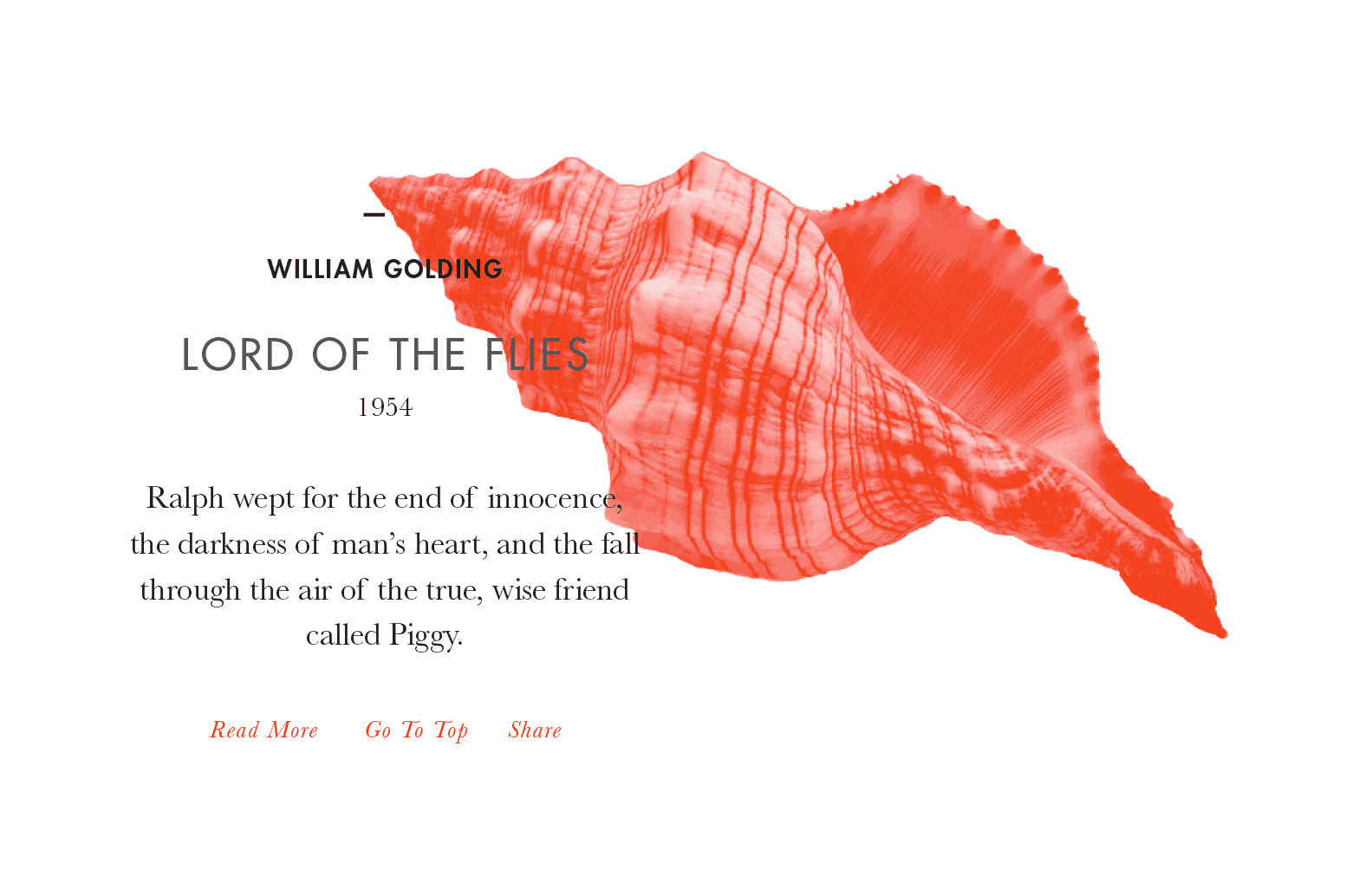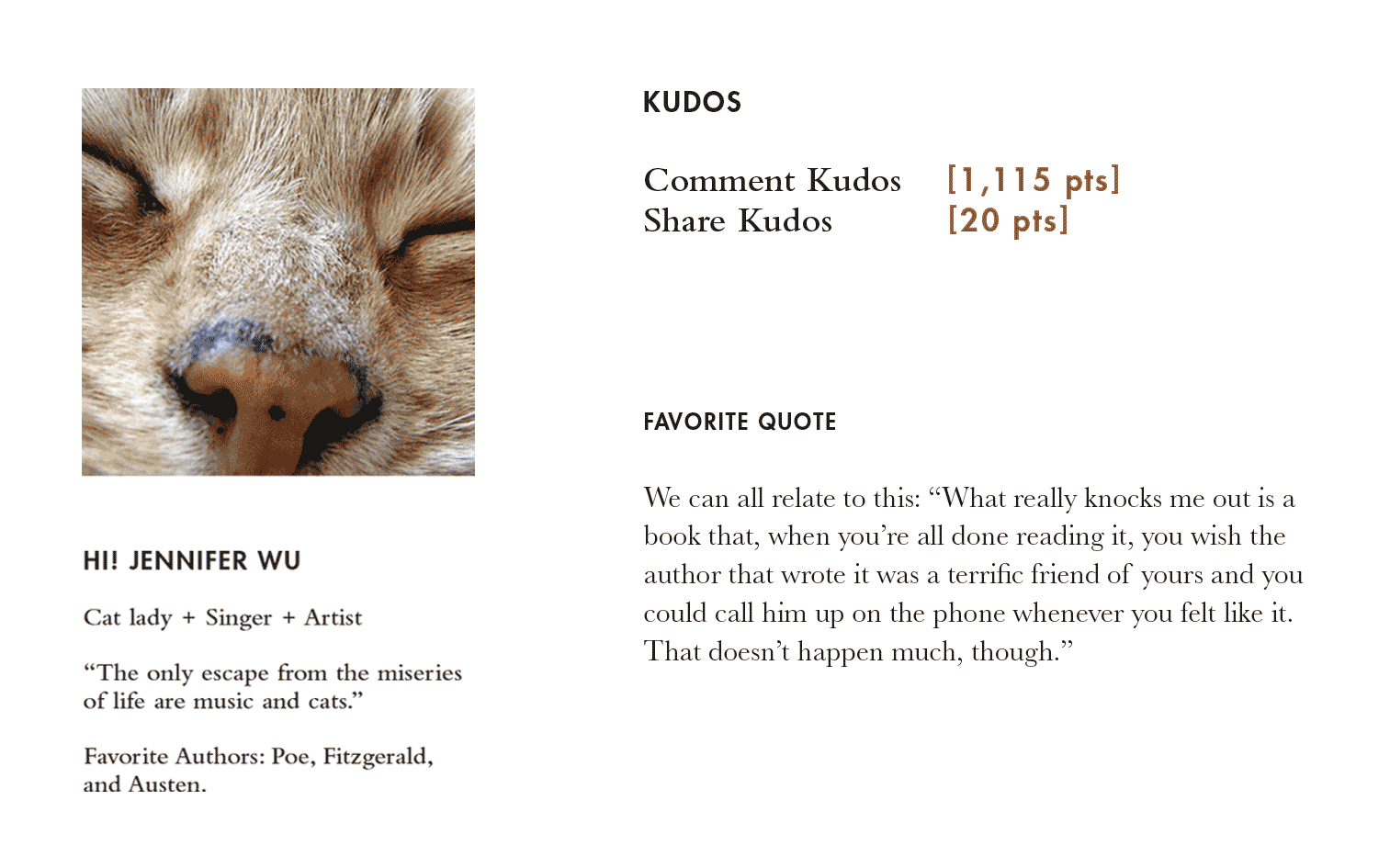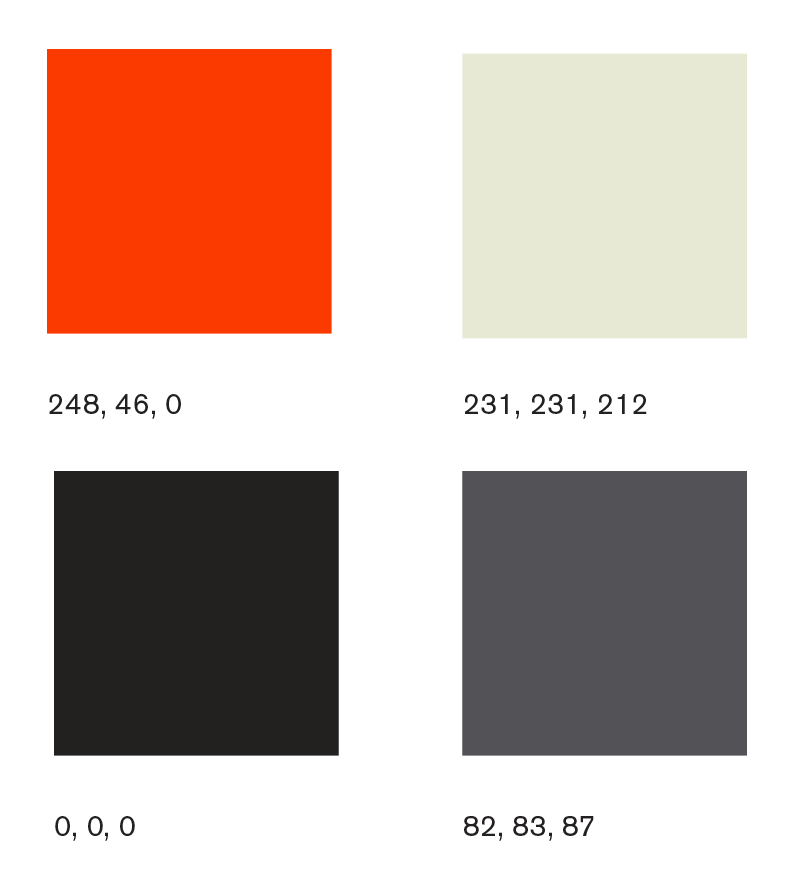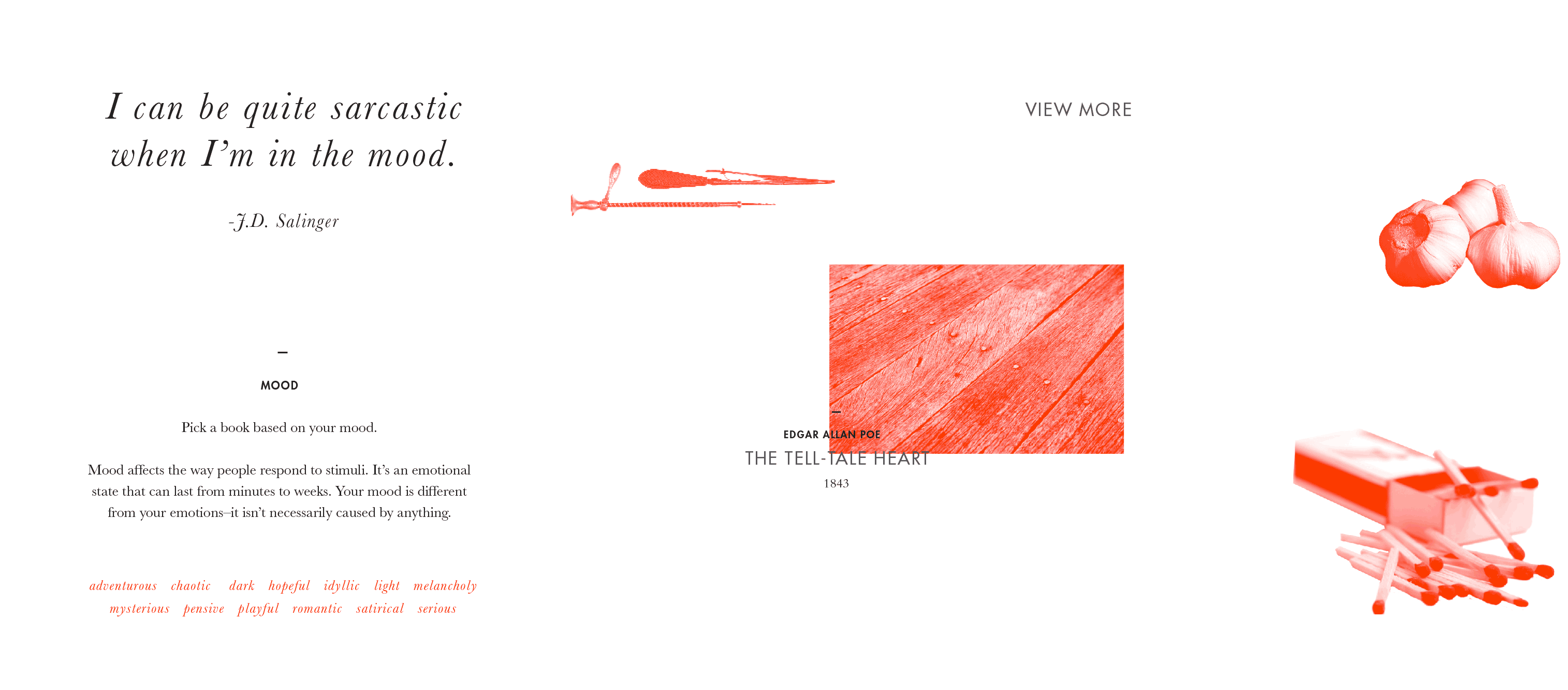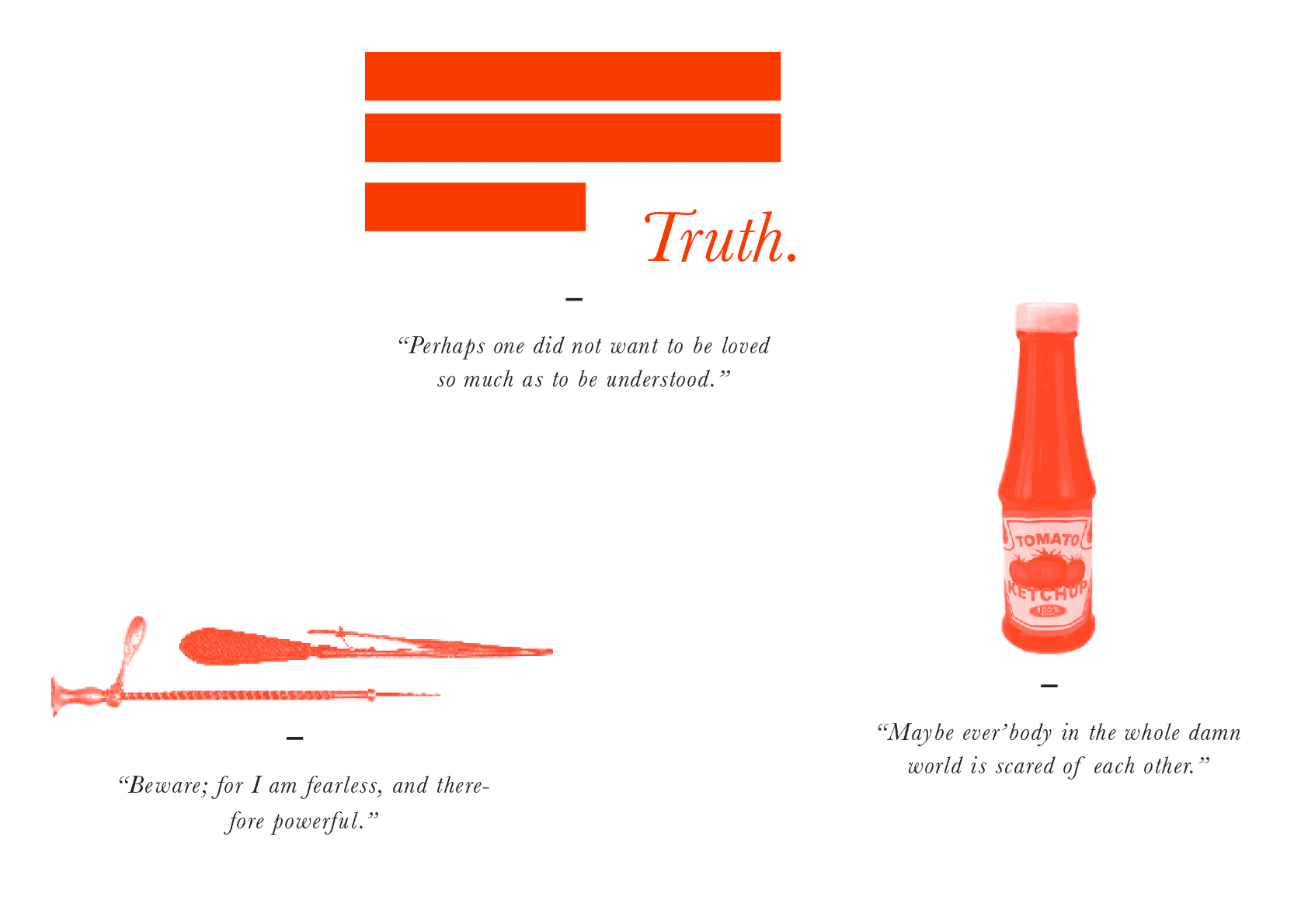PRINTED
When I was younger, I felt intimidated by the required books English teachers set for us in class. In fact, I felt forced into doing something I didn’t want to do. However, I later realized that I missed out on a lot of great stories and lessons by skipping out on them and going for an abridgment. Therefore, I wanted to change the system of how students were introduced to reading—especially literary classics.
PRINTED is a conceptual interactive platform dedicated to a student audience. The site provides a new experiences for beginning, intermediate, and advance readers all with the goal of building a community of avid readers through a shared experience.
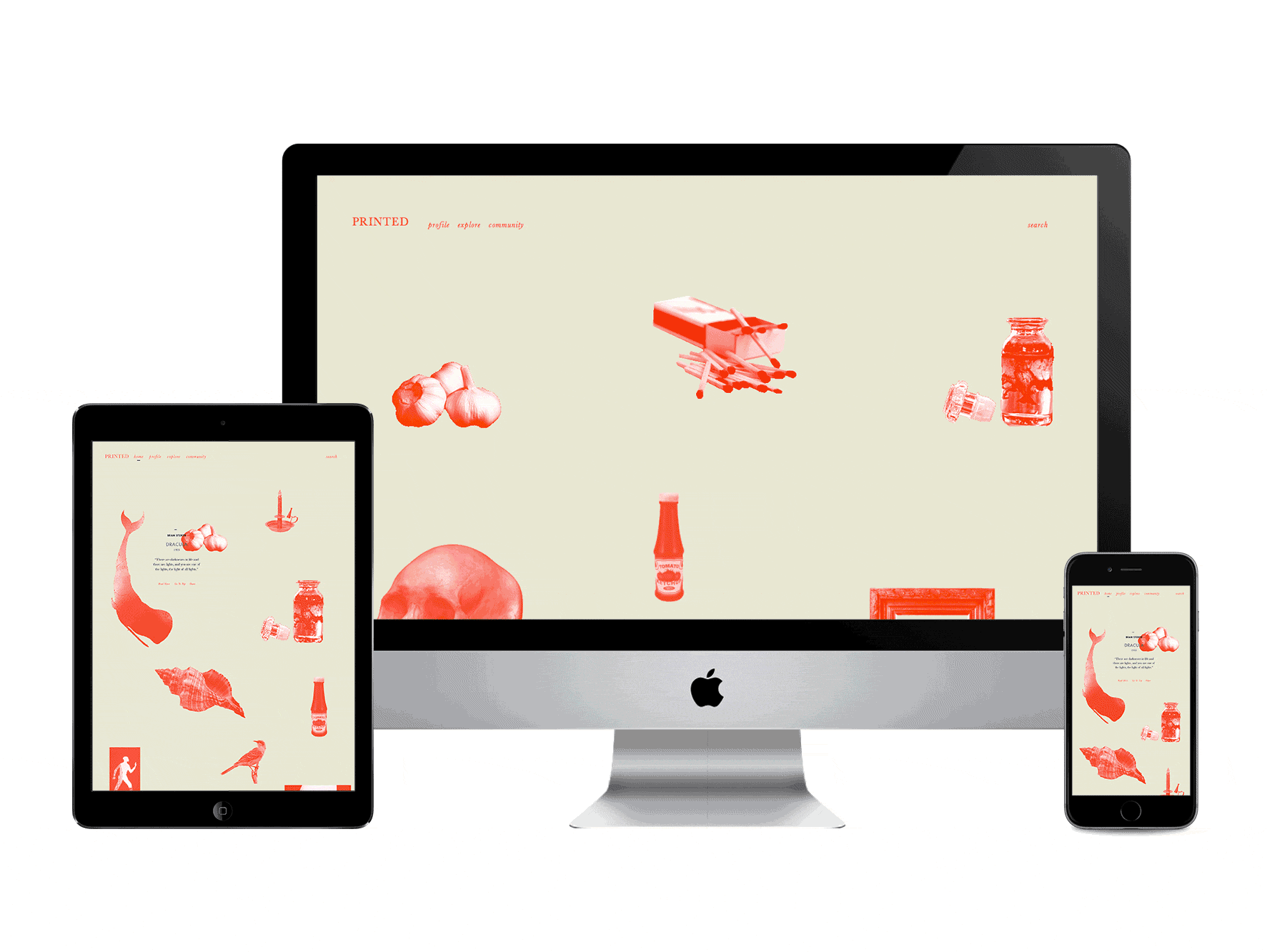



Learnings
I interviewed current high schoolers to understand their experiences in regards to class readings. Some key information I got from them were:
“I don’t like reading what the teachers make me read at school. I like reading what I choose. Comics are great; they have both art and dialogue—it’s two for one.” Ken C.
"Intros are very important, cause if it’s not interesting no one will start it. Animations or visual aids that follow the story are nice." Robert T.
I poured through many sites, some dedicated to young adults, and other for a broader audience. I noticed that many popular features were contests, blogs, ultimate reading lists, and connections to social media. The trends were fun trivia, build-your-own-library, polls, cover art through the years, and rating systems. I quickly realized the lack of hierarchy and simplicity in most of these examples. They were also lacking an immediate spark.
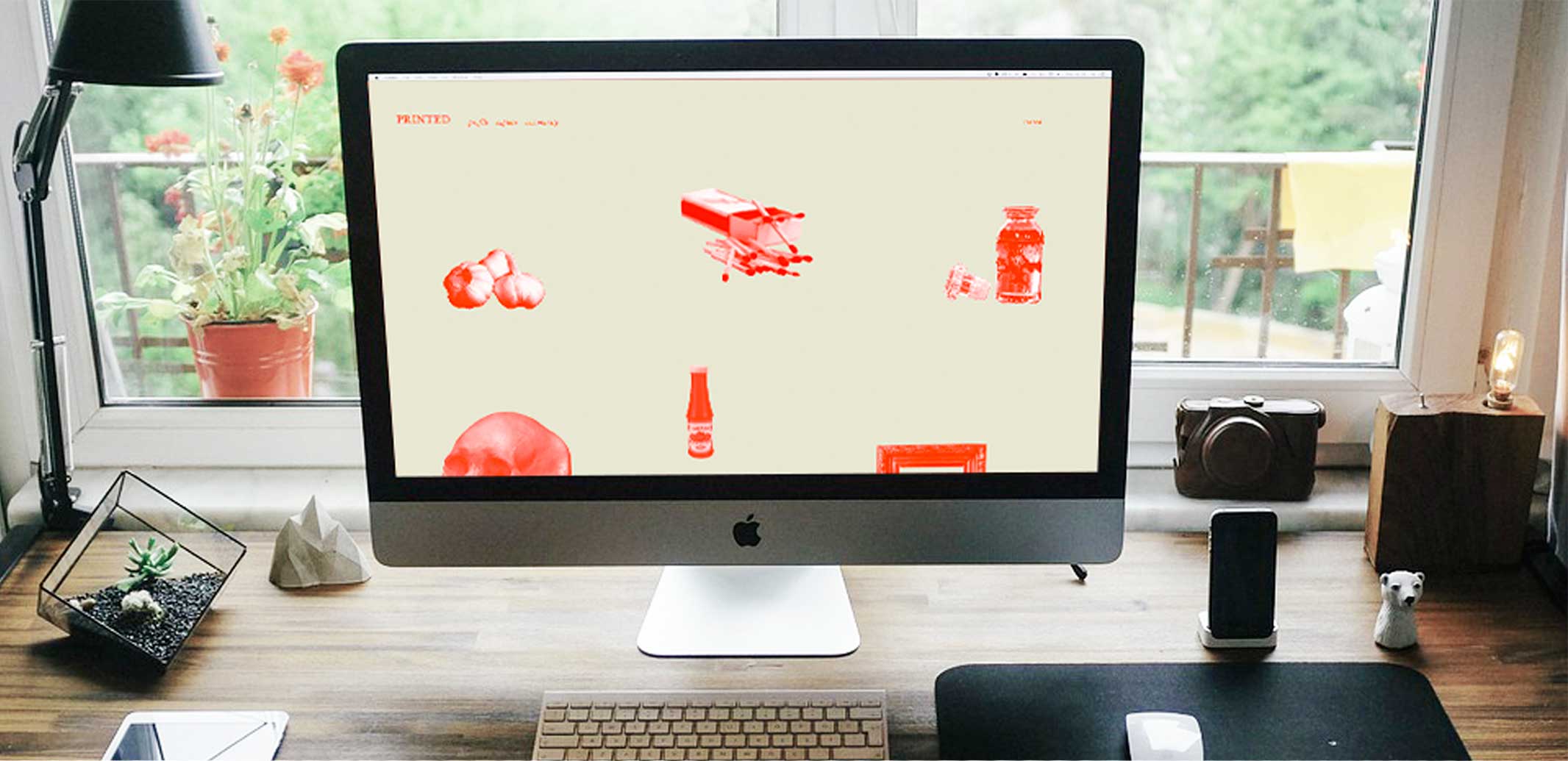



Product Ecosystem
PRINTED emphasizes the use of three things: a quick and interesting introduction, fun and playful visuals, and related information. To entice the users to take the first step in reading, the introduction is formatted with a fun image, short and concise quote, and a snippet of the book’s personality. The bright red-orange is youthful and the warm off-white balances it out and gives the site a clean, simple look.
The first layer of PRINTED offers small condensed intros to visitors. The student may navigate and explore the site on their own—without any additional distractions. The main focus will become just to learn about the variety of books out there.
The second layer allows intermediate users to form a profile, add books to their library, save favorite quotes, and search for books through mood, author, or genre.
The third layer is for advance users; it offers a community of peers and a space to ask questions, share thoughts, comment and contribute to.
With these steps, users can gradually become more inclined to start and finish classical literature. Then, eventually they will grow into avid readers or start books on their own.
